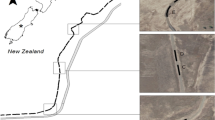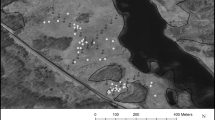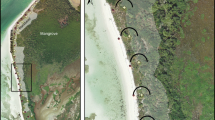Abstract
Monitoring programs for butterflies and moths are focused on the adult stage, rarely considering other life stages. Transect-based counts of adults and searches for empty pupal cases have been suggested as standard monitoring protocols for the critically endangered golden sun moth Synemon plana in Australia. To date, surveys and monitoring have focused only on counts of adults. However, undertaking such counts is constrained by the short adult life of the species (1–2 days), and the fact that prevailing weather conditions can seriously influence detectability. We tested whether empty pupal cases of S. plana can be used to supplement the monitoring of adults and whether this technique can be undertaken by citizen scientists. Volunteers from Canberra (Australia) collected 650 pupal cases from 11 grassland areas. The cases were found in native grasslands and in grassland comprised entirely of the exotic Chilean needle grass (Nassella neesiana). Pupal cases of S. plana were found to be durable, with most persisting in the field for greater than 3 weeks after first sighting, and exhibited a male biased sex ratio. This study demonstrates that detection of empty pupal cases provides a potential additional tool to monitor S. plana that is not dependent on the restrictions of prevailing weather conditions and time of day, and can be undertaken by citizen scientists.


Similar content being viewed by others
References
Adamski P (2004) Sex ratio of apollo butterfly Parnassius apollo (Lepidoptera: Papilionidae)-facts and artefacts. Eur J Entomol 101:341
Anonymous (1999) Inaugural list of weeds of national significance. (http://www.weeds.org.au/WoNS)
Asher J, Fox R, Warren MS (2011) British butterfly distributions and the 2010 target. J Insect Conserv 15:291–299
Australian Government (2009) Significant impact guidelines for the critically endangered golden sun moth (Synemon plana). Department of the Environment, Water, Heritage and the Arts, Canberra
Bhattacharya A (2004) Flower visitors and fruitset of Anacardium occidentale. Ann Bot Fenn 41:385–392
Braby MF, Dunford M (2006) Field observation on the ecology of the golden sun moth, Synemon plana Walker (Lepidoptera: Castniidae). Aust Entomol 22:103–110
Braby MF, Van Praagh B, New TR (1999) The dull copper, Paralucia pyrodiscus (Lycaenidae). In: Kitching RL, Scheermeyer E, Jones RE, Pierce NE (eds) Biology of Australian butterflies monographs of Australian lepidoptera, vol 6. CSIRO Publishing, Melbourne, pp 247–260
Brereton T, Roy DB, Middlebrook I, Botham M, Warren M (2011) The development of butterfly indicators in the United Kingdom and assessments in 2010. J Insect Conserv 15:139–151
Brown G, Tolsma A, McNabb E (2012) Ecologiocal aspects of new populations of the threatened golden sun moth, Synemon plana on the Victorian Volcanic Plains. Vic Nat 129:77–85
Clarke GM, O’Dwyer C (2000) Genetic variability and population structure of the endangered golden sun moth, Synemon plana. Biol Conserv 92:371–381
Clarke GM, Whyte LS (2003) Phylogeography and population history of the endangered golden sun moth (Synemon plana) revealed by allozymes and mitochondrial DNA analysis. Conserv Genet 4:719–734
DEWHA (2009) EPBC Act Policy Statement 3.12: significant impact guidelines for the critically endangered golden sun moth (Synemon plana) (Online). Department of the Environment, Water, Heritage and the Arts, Canberra. Available from: http://www.environment.gov.au/epbc/publications/pubs/golden-sun-moth.pdf. (Ed. W Department of the Environment, Heritage and the Arts (DEWHA) p 2009
Doerpinghaus A, Eichen C, Gunnemann H, Leopold P, Neukirchen M, Petermann J, Schroeder E (2005) Methoden zur Erfassung von Arten der Anhänge IV und V der Fauna-Flora-Habitat-Richtlinie Naturschutz und Biologische Vielfalt 20, Bonn-Bad Godesberg, p 449
Dyson EA, Hurst GDD (2004) Persistence of an extreme sex-ratio bias in a natural population. Proc Natl Acad Sci USA 101:6520–6523
Edwards ED (1993) Synemon plana site, Belconnen Naval Base, Lawson. In: Morl grasslands (ed) Proceedings of a workshop and public seminar. September 24 & 25 1993. ACT Parks and Conservation Service, Canberra, pp 150–152
Edwards ED (1994) Survey of lowland grassland sites in the A.C.T. for the golden sun moth Synemon plana. Unpublished report to Wildlife Research Unit. ACT Parks and Conservation Services, Canberra
Ehrlich PR, Launer AE, Murphy DD (1984) Can sex ratio be defined or determined? The case of a population of Checkerspot butterflies. Am Nat 124:527–539
Emlen ST, Oring LW (1977) Ecology, sexular selection, and the evolution of mating systems. Science 197:215–223
Feinstein J (2004) DNA sequence from butterfly frass and exuviae. Conserv Genet 5:103–104
Fisher RA (1930) The genetical theory of natural selection. Oxford Univeristy Press, London
Frey DF, Leong KLH (1993) Can microhabitat selection or differences in ‘catchability’ explain male-biased sex ratios in overwintering populations of monarch butterflies? Anim Behav 45:1025–1027
Garland MS, Davis AK (2002) An examination of monarch butterfly (Danaus plexippus) autumn migration in coastal Virginia. Am Midl Nat 147:170–174
Gibbs D, Walton R, Brower L, Davis AK (2006) Monarch butterfly (Lepidoptera: Nymphalidae) migration monitoring at Chincoteague, Virginia and Cape May, New Jersey: a comparison of long-term trends. J Kansas Entomol Soc 79:156–164
Gibson L, New TR (2007) Problems in studying populations of the golden sun-moth, Synemon plana (Lepidoptera: Castniidae), in south eastern Australia. J Insect Conserv 11:309–313
Gilmore D, Koehler S, O’Dwyer C, Moore W (2008) Golden sun moth Synemon plana (Lepidoptera: Castniidae): results of a broad survey of populations around Melbourne. Vic Nat 125:39–46
ACT Government (1999) Environment Protection and Biodiversity Act 1999. Natural temperate grassland of the Victorian Volcanic Plain. A nationally threatened ecological community. Department of the Environment, Water, Heritage and the Arts. (http://www.environment.gov.au/epbc/publications/pubs/grasslands-victoria.pdf (download 19.01.2010)
Hermann G (1999) Methoden der qualitativen Erfassung von Tagfaltern. In: Settele J, Feldmann R, Reinhard R (eds) Die Tagfalter Deutschlands. Ulmer Verlag, Stuttgart, pp 124–143
Jiggins FM, Hurst GDD, Majerus MEN (1998) Sex ratio distortion in Acraea encedon (Lepidoptera: Nymphalidae) is caused by a male-killing bacterium. Heredity 81:87–91
Kirkpatrick J, McDougall K, Hyde M (1995) Australian’s most threatened ecosystems the southeastern lowland native grasslands. Surry Beatty & Sons, Chipping Norton
Konvicka M, Cizek O, Filipova L, Fric Z, Benes J, Krupka M, Zamecnik J, Dockalova Z (2005) For whom the bells toll: demography of the last population of the butterfly Euphydryas maturna in the Czech Republic. Biologia 60:551–557
Lewis OT, Hurford C (1997) Assessing the status of the marsh fritillary butterfly (Eurodryas aurinia): an example from Glamorgan, UK. J Insect Conserv 1:159–166
Lindenmayer DB, Likens GE (2010) The science and application of ecological monitoring. Biol Conserv 143:1317–1328
Maes D, Vanreusel W, Talloen W, Van Dyck H (2004) Functional conservation units for the endangered Alcon Bluebutterfly Maculinea alcon in Belgium (Lepidoptera: Lycaenidae). Biol Conserv 120:229–241
New TR (1993) Conservation biology of Lycaenidae (butterflies). IUCN Species Survival Commission Paper no. 8
New TR (2010) Butterfly conservation in south-eastern Australia: progress and prospects. Springer, Netherlands
New TR (2012) The golden sun moth, Synemon plana Walker (Castniidae): continuing conservation ambiguity in Victoria. Vic Nat 129:109–113
Nowicki P, Settele J, Henry PY, Woyciechowski M (2008) Butterfly monitoring methods: the ideal and the real world. Isr J Ecol Evol 54:69–88
Post DM (2002) Using stable isotopes to estimate trophic position: models, methods, and assumptions. Ecology 83:703–718
Richter A (2010) What makes species vulnerable to extinction following habitat fragmentation and degradation? A test using the insect fauna in native temperate grasslands in south-eastern Australia. PhD thesis, University of Canberra
Richter A, Osborne WS, Robertson G, Hnatiuk S (2009) Community monitoring of golden sun moths in the Australian Capital Region, 2008–2009. Report prepared for WWF Australia. University of Canberra, Institute for Applied Ecology, Canberra, Australia
Sands D (2008) Conserving the Richmond birdwing Butterfly over two decades: where to next? Ecol Manag Restor 9:4–14
Smart SM, Firbank LG, Bunce RGH, Watkins JW (2000) Quantifying changes in abundance of food plants for butterfly larvae and farmland birds. J Appl Ecol 37:398–414
Spellerberg IF (2005) Monitoring ecological change. Cambridge University Press, Cambridge
Tibbets TM, Wheeless LA, Del Rio CM (2008) Isotopic enrichment without change in diet: an ontogenetic shift in δ15N during insect metamorphosis. Funct Ecol 22:109–113
Van Swaay C, Nowicki P, Settele J, van Strien A (2008) Butterfly monitoring in Europe: methods, applications and perspectives. Biodivers Conserv 17:3455–3469
VanStrien AJ, VandePavert R, Moss D, Yates TJ, VanSwaay CAM, Vos P (1997) The statistical power of two butterfly monitoring schemes to detect trends. J Appl Ecol 34:817–828
WallisDeVries MF, Baxter W, Van Vliet AJ (2011) Beyond climate envelopes: effects of weather on regional population trends in butterflies. Oecologia 167:559–571
Watts PC, Thompson DJ, Daguet C, Kemp SJ (2005) Exuviae as a reliable source of DNA for population-genetic analysis of odonates. Odonatologica 34:183–187
Acknowledgments
We thank Friends of Grasslands, Canberra, and the many volunteers who contributed to the success of this project. Thank you to Alan Yen and Daniel Gilmore for numerous discussions about the golden sun moth and thanks to Bernhard Theißen, Patrick Leopold and Gabriel Hermann who provided advice regarding the implementation of non adult life stages in monitoring programs in Europe. Nadav Pezaro assisted with the interpretation of the sex ratio bias in the species. Thank you to Michael Braby and one anonymous reviewer for providing helpful comments to improve the paper. The project was financially supported by the World Wide Fund for Nature and the Australian Capital Territory (ACT) Government. Facilities and transport were provided by the Institute for Applied Ecology at the University of Canberra. Permission to undertake this research was provided by the ACT Government. Finally, we thank our families who shared our enthusiasm for this project and tolerated the long hours that we had to devote to field and laboratory work.
Author information
Authors and Affiliations
Corresponding author
Rights and permissions
About this article
Cite this article
Richter, A., Weinhold, D., Robertson, G. et al. More than an empty case: a non invasive technique for monitoring the Australian critically endangered golden sun moth, Synemon plana (Lepidoptera: Castniidae). J Insect Conserv 17, 529–536 (2013). https://doi.org/10.1007/s10841-012-9537-5
Received:
Accepted:
Published:
Issue Date:
DOI: https://doi.org/10.1007/s10841-012-9537-5




